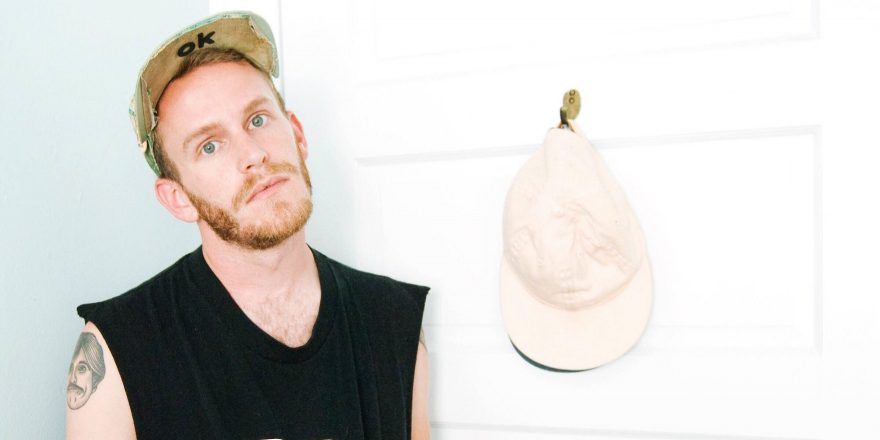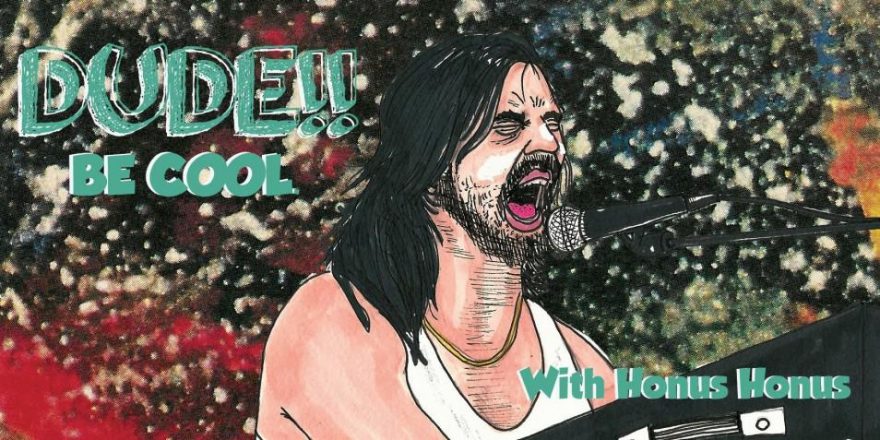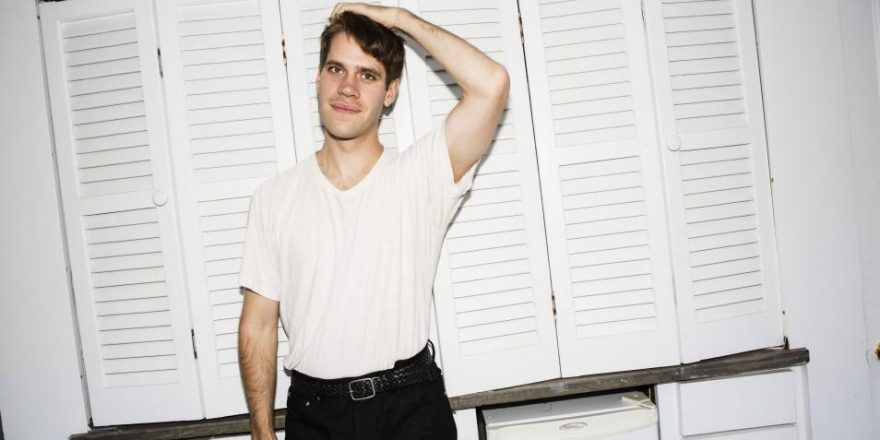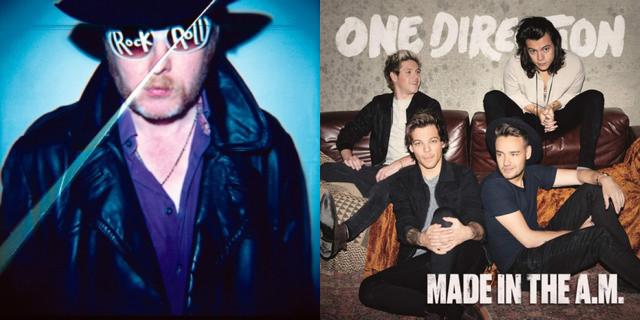“Loving him is like trying to change your mind once you’re already flying through the free fall” — “Red” – Taylor Swift
I think about this Taylor Swift lyric a lot — mostly when I’m fantasizing about my fictional relationship with Jake Gyllenhaal — but lately I think it perfectly sums up how a lot of folks feel about their favorite mid-2000s bands.
Twenty sixteen has seen new releases from the likes of Brand New, Bloc Party and Tegan and Sara — as well as a ton of other indie/pop/rock/whatever veterans. But if there’s one thing that’s obviously changed in the ten or so years since their breakthrough records, it’s the climate of the industry. Now, many of these artists are embracing pop music to varying degrees –– a choice that’s riled up some long-time fans.
As we all know, not everyone’s comeback record is good — and just because you liked a band ten years ago does not mean you’re a forever fan. So what I’m gonna try to do here is explain why your old favorite band’s new songs might not be immediately resonating with you. I’m gonna do that by talking about me (lol) and my firsthand experiences with a movement called Poptimism. (Warning: I’ve always loved pop music. My first favorite band, in 1997, was the Spice Girls. Still, the first CD I ever bought was Blink-182’s 1999 album Enema of the State…so do with that what you will.)
From Brand New to Taylor Swift to Brand New
Brand New hit teenage me really hard. In 2002, my sugary pop-punk palette was getting more refined — from a Hot-Topic-Twice-Per-Week obsession with Good Charlotte to a more severe The-World-Is-F*****-I’m-Straightening-My-Hair interest in heavier bands, such as Thursday. My friends and family could attest to the fact that, at the time, I desperately needed a middle ground — and the music video for 2003’s Brand New track, “The Quiet Things That No One Ever Knows,” was basically an infomercial for a vacation to that middle ground. (I watched so much MTV, MTV2 and Fuse growing up — OMG).
I was sold, and despite the title of the album from which the song came, Deja Entendu, the record was like nothing I’d ever heard before. Brand New’s next two full-lengths found me asking myself, “Am I Jesse Lacey? Or is Jesse Lacey me?” Still, after years of no new music — and rumors of a breakup — I worried I’d never relate to the emotional devastation of a well-crafted pop-punk record again…until I heard Red by Taylor Swift in 2012.
Since 2009, “Taylor Swift” has been synonymous with “news,” so if you missed out on Red’s glowing press in late 2012 — and all through 2013 — I’d honestly be very, very impressed. After seeing so many fellow musicians joining in on the praise — many in punk bands like mine — and enjoying the singles from her previous albums enough, I figured I’d check it out. And, honestly, I was completely, 5,000,000% blown away. I still am. The album has the very punk ability to take loaded, complicated and sometimes dark situations and present them with just the right amount of snark — but that’s before the songs are polished into pop gems with hooks that are beautiful, smart and easy to digest.
Red is a pop-punk record made by a pop star. It’s an emo record. It’s a great record. I loved it. I still love it. I successfully convinced my band to cover “All Too Well” two years ago for Valentine’s Day. I may or may not have even been listening to “State of Grace” right before I started writing this.
And so it was that Taylor Swift filled the pop-punk void left behind by Brand New — until two months ago when Brand New released their most pop-indebted track since 2001, “I Am a Nightmare,” seemingly out of nowhere. The song boasts a super-short and ridiculously catchy chorus that states what a lot of fans were probably feeling when they heard the track: this new sound, it’s “coming out of the ground/it’s kinda freaking me out.”
The new brand new song doesn't sound like anything on daisy so it's not good
— :l (@greg_mattia) May 17, 2016
But honestly, fans should have probably seen this coming. Brand New’s debut full-length, Your Favorite Weapon (2001), definitely leans closer to the pop side of pop-punk. And if I were tasked with following up a cathartic and humorless LP like 2009’s Daisy, I’d probably want to have a little fun, too.
wow the new Brand New song is hilariously bad
— best of ben affleck (@SamLeatherss) May 17, 2016
Now, I can’t imagine Taylor ever saying something as gross and dramatic as her wanting to “throw up snakes” (as Jesse Lacey states in “I am a Nightmare”), but I want to, and hey — it could happen! And I’m not saying that Jesse Lacey spent the past three years listening to Taylor Swift like I did, but honestly — it wouldn’t surprise me! In the age of music streaming, it’s mainstream pop artists that are getting paid — they’re also the ones getting blogged/tweeted about the most — and in my experience, it’s often other artists doing the typing.
If fans are bothered by the fact that today’s Brand New sounds like they’ve listened to “I Knew You Were Trouble” a few too many times…well, I would bet that Taylor’s heard “The Boy Who Blocked His Own Shot” at least twice.
From Bloc Party to Blood Orange to Bloc Party
Bloc Party introduced me to dance-punk in 2004 with their debut album Silent Alarm, and following the band eventually introduced me to the world of underground electronica and dance music. Artists such as Calvin Harris, Chromeo and Tiësto (whose 2009 full-length Kaleidoscope is criminally underrated and basically a who’s-who of pop-minded indie rock) all entered my radar courtesy of Bloc Party.
Silent Alarm garnered the band an 8.9 Best New Music review from Pitchfork — a feat very few artists will ever achieve. But, when Bloc Party started embracing more dance and electronic elements on their follow-up records — while still delivering the same strong lyrical content — the scores got lower. This confused me. Why did the albums after Silent Alarm have to be indie-ROCK in order to be considered good? I wasn’t surprised when the band went on hiatus in 2009 and front man Kele Okereke started making pop/dance music under his first name.
Fellow U.K. band Test Icicles followed a different path. Although Test Icicles’ career spanned only a fraction of Bloc Party’s, their guitarist/sometimes vocalist Devonté “Dev” Hynes has gone on to become the blog equivalent of a household name. The band managed to garner some decent critical acclaim in 2005 and amassed an impressive following of fans on MySpace (RIP the top eight), but eventually split in 2006. Hynes then put out two albums of lush, acoustic guitar-based indie rock under the name Lightspeed Champion before settling into his Blood Orange moniker. Blood Orange rocks. Err…Blood Orange doesn’t actually “rock.” His music is more subdued electronic R&B that utilizes Dev’s amazing and versatile skills as a producer — skills that have been used by pop icons including Kylie Minogue, Solange Knowles, Sky Ferreira and, most recently, the Queen of Pop LPs, Carly Rae Jepsen. The collaboration between Hynes and Jepsen on the song “All That” off her 2015 album E•MO•TION is important because the album has a quality few pop releases boast: it’s radio ready and unanimously adored by critics.
Now, if you had told me in 2013 — fresh off the heels of Four (2012) and The Nextwave Sessions (2013) — that a reunited Bloc Party’s fifth album would be more Blood Orange than, say, Franz Ferdinand (?), I would have said…duh!? Thus we have Hymns, a brand new full-length from Bloc Party that’s got those fans who worship at the throne of Silent Alarm ruffled up like Angry Birds.
The new Bloc Party album is good…if you've never listened to Bloc Party before ?
— Jonathan Rogers (@JonverseAllStar) February 12, 2016
Hymns features only half the lineup that made the band famous, a point of contention among many fans (who might actually have some reasonable concerns), but, outside of drama and politics, it sounds like a Bloc Party album in 2016 probably should. It’s light, it’s sparse, and it tends to lend itself more toward a pretty, hopeful R&B chorus than a darting guitar line –– a tradeoff I welcome with open arms. One aspect I really like about the album is here Okereke’s addressing his sexuality more openly and proudly than ever before –– it’s refreshing. Oh! And if the mild religious imagery of the album’s title and the occasional lyric discussing faith is a turnoff — well, let’s face it, some of us could really use a little Jesus.
From Tegan and Sara to Kesha to Tegan and Sara
Now, if “Taylor Swift” is synonymous with “news,” then “Tegan and Sara” is synonymous with “Poptimism.” The Canadian sisters duo has been a favorite of mine since middle school, but for years I couldn’t understand one thing (outside of the distracting and completely unnecessary rumors regarding their relation and sexualities): why does this band, of all bands, get so much flak from critics for mixing pop and indie rock?
Their 2007 full-length, The Con, felt like God’s gift to seventeen-year-old me — maybe because, at the time, I was still a little ashamed of loving pop music and being queer, or maybe because it literally came out on my birthday. Regardless, I fell for that album like no other before it. The 2009 follow-up LP, Sainthood, saw the band finally winning critics over with a more indie-rock-centric sound, but they were losing me. Don’t get me wrong, I still loved that album, but in the second half of the year I found myself falling in love with another artist’s work: pop singer Kesha.
So when it was announced in 2012 that Tegan and Sara would be working with producer Greg Kurstin on their seventh studio album, I was ecstatic — not just because Kurstin was responsible for the title track (one of my personal faves) of Kesha’s Animal (2010), but because it meant Tegan and Sara were making the jump from indie rock to pure, unadulterated pop. The resulting record, Heartthrob (2013), had more in common with Kesha singles such as “Your Love is My Drug” (2010) and “C’mon” (2012) than anything the band had released before, and surprisingly, fans and critics responded well to it. Now the twins are back with Love You to Death, an even more radio-friendly affair than Heartthrob, but some fans seem to think the album’s refined mainstream sound finds the band watered down.
Tegan and Sara went too hard into pop. Can't get excited about the new album, I don't like any of the 3 singles. And I liked the last one.
— Adam McDonald (@adammcdonald) May 12, 2016
Those fans are right about one thing: the production on Love You to Death is definitely simpler. The songs are obvious both musically and lyrically, traits that aren’t uncommon for a band’s big bid for the Billboard charts. But the no-frills presentation allows the overall message of each track to shine — and it’s those messages that make the album so important.
As Kesha empowered restless millennials on her 2012 full-length Warrior, Tegan and Sara are rallying for queer love and empowering the LGBTQA community with Love You to Death, and at no point is it more obvious than on such standout tracks as “Boyfriend” and “BWU.” Tackling important issues via an album of songs destined for radio play is genius, and in my opinion, any fan deterred by seeing the sisters use their newfound popularity to highlight such a key aspect of their music –– an aspect that has been there since the beginning –– is a fan worth leaving behind.
Just as it feels ridiculous to try to defend a band you’ve loved for a decade to someone who “used to be a fan,” honestly, in 2016 it feels ridiculous to be defending the influence of modern pop music on any given genre of music. If anything, artists such as Brand New, Bloc Party, and Tegan and Sara are proving the lines between what’s pop and what’s not are less defined now than ever. One thing’s for certain: if you’ve been following these artists at all, you definitely can’t say loving them is like “driving a new Maserati down a dead-end street” (as Taylor Swift would on “Red”) — cuz after ten years, it’s definitely more of a long and winding road, if you know what I mean.









